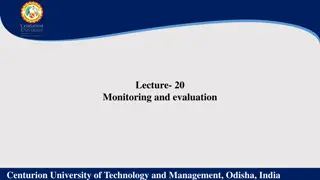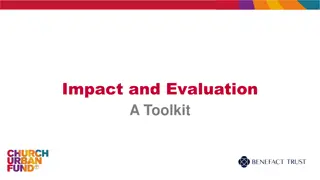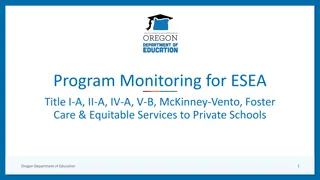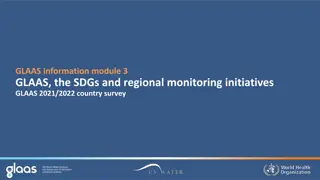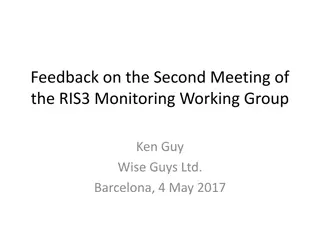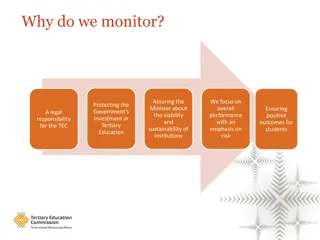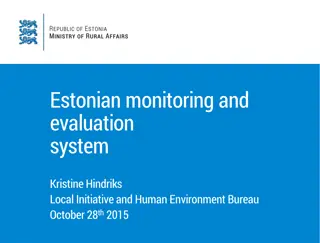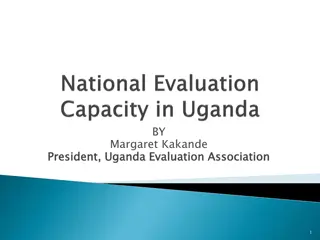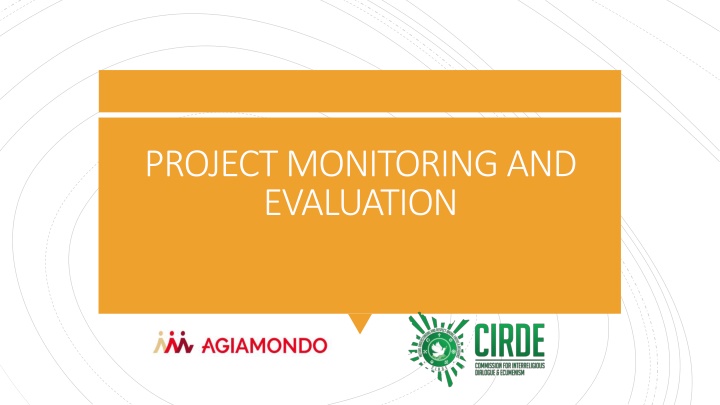
Project Monitoring and Evaluation
Explore the importance of monitoring and evaluation in projects, learn who should be involved, what to monitor, and how to gather feedback for project improvement. Delve into setting objectives, identifying indicators, and asking key questions during planning and monitoring phases.
Download Presentation

Please find below an Image/Link to download the presentation.
The content on the website is provided AS IS for your information and personal use only. It may not be sold, licensed, or shared on other websites without obtaining consent from the author. If you encounter any issues during the download, it is possible that the publisher has removed the file from their server.
You are allowed to download the files provided on this website for personal or commercial use, subject to the condition that they are used lawfully. All files are the property of their respective owners.
The content on the website is provided AS IS for your information and personal use only. It may not be sold, licensed, or shared on other websites without obtaining consent from the author.
E N D
Presentation Transcript
PROJECT MONITORING AND EVALUATION
What is monitoring and why should we monitor? Who should be involved in monitoring? MONITORING What should we monitor? What can we use to monitor during an activity? (Sources of evidence/ Means of verification)
What is monitoring and why should we monitor? is a way of getting feedback on the usefulness of the work that we do for the people we are trying to help (project reflection and organizational learning). to ensure that the aims and objectives of the project are being met and to re-adjust programming based on lessons learned to date. Important: Monitoring Plan (What(purpose)? Who for?, Who does it?, When is it needed?, How?, and How often?) MONITORING Who should be involved in monitoring? People involved in the planning and implementation of the activity. E.g. Field animators, project coordinators, volunteers, interns, etc.
What should we monitor? Objective or outcome the activity and/or project is meant to achieve Indicators or progress markers: markers of project achievement/ Describes the change process Qualitative (behavioral change) and quantitative (number of persons in attendance (male, female), number of activities implemented, duration of activity) data Some questions to ask yourself during planning of an activity/project to guide monitoring session? Who are we targeting? (group of participants in the activity); Which stakeholders will need to be present in the activity? Where will the activity be implemented? (context) What do we want to achieve at the end of the activity/project? Which data collection tools will we use during activity? Some questions to ask during monitoring? Who attended the activity and how many people were present (youth, men, women, elderly)? Did we achieve our objective? What went well? What did not go well? What can we do better next time? What were suggestions given by participants for the next activity? (this is dependent on type of activity: re-occurrence) MONITORING
What can we use to monitor during an activity? (Sources of evidence/ Means of verification) Focus group discussions (FGDs) Questionnaires Interviews (Written and Spoken) Observation Mobile conversations (Calls and text messages) Media (Print media, Social media, Broadcast media) e. t.c. MONITORING
Evaluation is a process that assesses the relevance, effectiveness, efficiency and sustainability of the project : how did the different outcomes contribute to change? Comparing situation at the beginning and end of the project. Opportunity for reflection and learning. EVALUATION
Types of Evaluation: Self-evaluation (implementation team) External evaluation (objective assessment) Participatory evaluation (include the beneficiaries) What should be the focus? EVALUATION Outcomes the project has contributed to Contribution to changes at the level of end beneficiaries (larger community): intended and unintended changes The strategies that were most and least helpful during implementation Reflection on project team s contribution to project Reflect on the context (where the project is) Lessons learnt and conclusions for follow up projects

